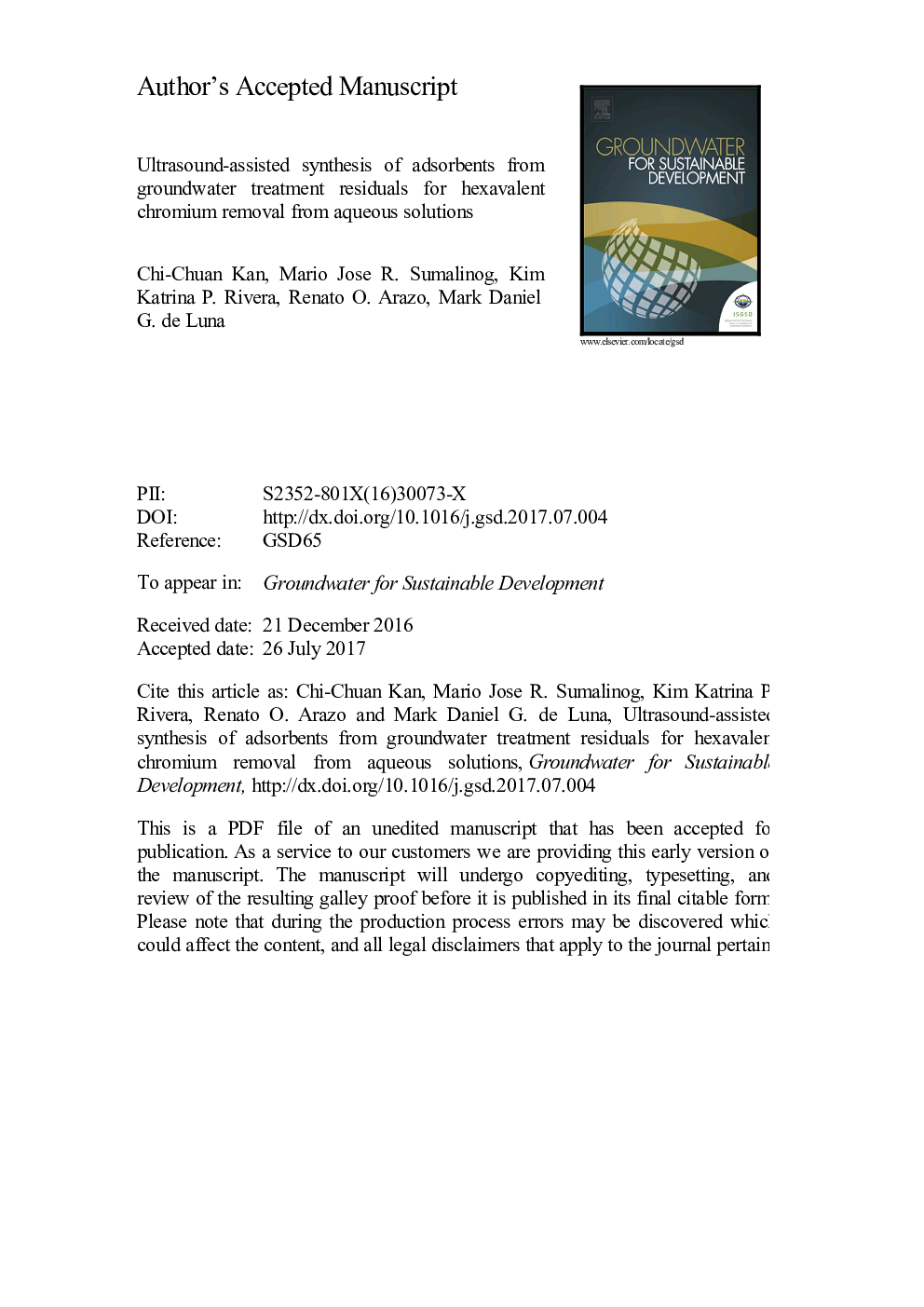| Article ID | Journal | Published Year | Pages | File Type |
|---|---|---|---|---|
| 5757208 | Groundwater for Sustainable Development | 2017 | 32 Pages |
Abstract
Groundwater treatment residuals are rich in nano-sized metal oxides which have the potential to remove various water contaminants. In this study, hexavalent chromium adsorbents were synthesized from the residuals of a 30,000Â m3Â d-1 groundwater treatment plant in Taiwan. The effects of acid type and ratio, acid concentration, ultrasonication time, and heating duration on adsorption capacity were examined. Adsorbents synthesized using dual-acid solutions yielded lower adsorption capacities compared to those which used pure acid solutions. Adsorption capacity decreased with higher ultrasonication time and heating duration. Chromium removal was improved with higher ionic strength and lower pH of the solution. Results showed high correlation between experimental data and the Freundlich isotherm (R2 = 0.9607) and the pseudo-second order kinetic model (R2 = 0.9740) suggesting that the dominant mechanism in the adsorption process is chemisorption. The involvement of Fe and Mn species during chromium adsorption was confirmed by the results of energy dispersive X-ray spectroscopy and Fourier transform infrared (FTIR) spectroscopy analyses.
Related Topics
Life Sciences
Environmental Science
Pollution
Authors
Chi-Chuan Kan, Mario Jose R. II, Kim Katrina P. Rivera, Renato O. Arazo, Mark Daniel G. de Luna,
